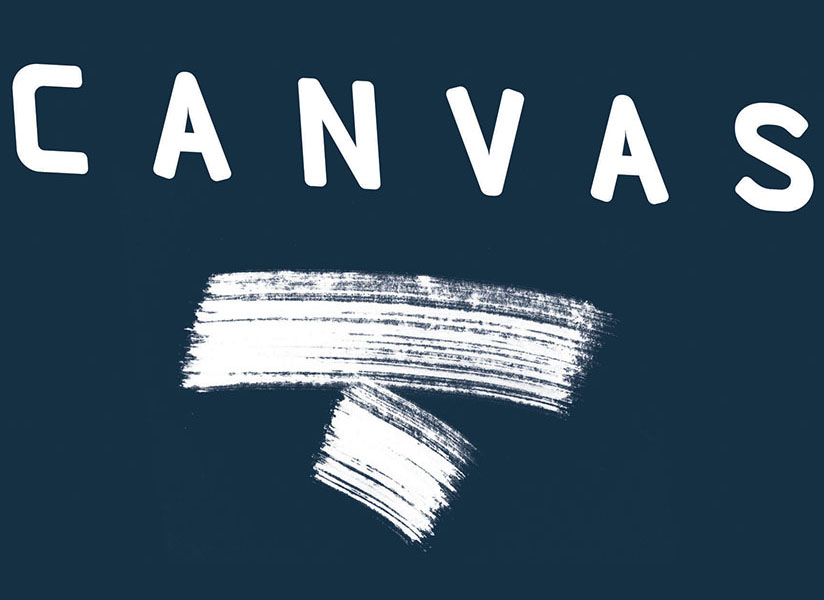A page, divided into panels, with drawings and word balloons: if you’re a reader of a certain age, you’ll recall a time when this was considered the mark of a lesser art form. It’s been really cool watching comic books and graphic novels mature into a genre that, at its best—such as Art Spiegelman’s Maus or Marjane Satrapi’s Persepolis—stands shoulder-to-shoulder with other narrative forms like film and literary fiction.
And as with so many American art forms, Jews have played a crucial part in the development of graphic narratives. This week is a roundup of some fascinating new explorations into the nexus of Jews and comic art. As ever, we look forward to your comments.
Above: Isaac Brynjegard-Bialik’s Number 1 (2020), mixed media, 12″ x 12″
When I Grow Up: The Lost Autobiographies of Six Yiddish Teens by Ken Krimstein
 From Ken Krimstein’s “When I Grow Up”
From Ken Krimstein’s “When I Grow Up”
Ken Krimstein is a cartoonist for The New Yorker and author of The Three Escapes of Hannah Arendt, a graphic biography of the philosopher. His new book, When I Grow Up, is a moving graphic rendering of six essays written by Jewish teens in the 1930s. The YIVO Institute for Jewish Research, then based in Vilna, invited Yiddish-speaking teens to enter an autobiographical essay contest with a grand prize of 150 zlotys (around $1000 in today’s dollars). The prize was to be awarded on Sept. 1, 1939: the day the Nazis invaded Poland.
The stories are powerful because we know what happened to the Jews of Vilna. But they’re also powerful as stories by teenagers, with all the complications and longings that implies.
The Forward has the incredible story of how these essays survived the war and the Soviet regime. On February 8th, The Museum of Jewish Heritage is offering the virtual event, Drawing It Out: Graphic Novels, Teenagers, And The Holocaust with a panel discussion featuring Krimstein.
American Comics: A History by Jeremy Dauber

These days we’re inundated with superhero content. But the history of comics in America is long and deep. With American Comics: A History, Jeremy Dauber (author of Jewish Humor and Professor of Yiddish Language, Literature and Culture at Columbia University) takes the reader from its Civil War-era progenitors like Thomas Nast to the gifted practitioners of our day like Alison Bechdel.
Our friends at the Jewish Book Council published an interview with Dauber conducted by Samantha Baskind, a Professor of Art History at Cleveland State University. Note, in the excerpt below, Dauber’s mention of networks, our raison d’être at CANVAS.
SB: Jews have been front and center in almost all areas of comics. The superhero genre was created by Jews—Jerry Siegel and Joe Shuster’s Superman—as was, arguably, the graphic novel, with the first often credited to be Will Eisner’s A Contract with God. Why do you think Jews have been at the vanguard of comics?
JD: I’ll take Eisner’s answer, for a first approximation: it was, when it started, a low-status medium with few barriers to entry, which made it ideal for Jews in an era of social and economic discrimination. […] I’d add, though, that a second reason, clearly, was network effects: people who were in the industry tended to invite in people they knew, and since it was a low-status medium at first, people didn’t care too much about how qualified they might have been.
Read the rest of the interview here.
Paper Golems: A Pandemic Diary by Isaac Brynjegard-Bialik

Gotham (2020), mixed media, 24″ x 36″
On his website, Brynjegard-Bialik refers to himself a nice Jewish artist and who are we to argue? Paper Golems is an exhibition of 72 papercuts made from cut-up comic books refashioned into creatures designed to protect, defend, inspire, and amuse.
Brynjegard-Bialik said, “Golems were created to protect people. When the pandemic began and the world seemed to unravel in so many different ways, I wanted to regain a sense of control over my life, so I started making golems.”
On the image above, he said, “The substance a golem is made from is often drawn from the land it will protect. As the legendary Golem of Prague was made of mud from the Vltava River, Gotham is made of Batman comics featuring Gotham City, always under his protection.”
If you’re in LA, you can see “Paper Golems: A Pandemic Diary” at the Dortort Center for the Arts Gallery from January 27 through March 11, 2022. You can learn more about Brynjegard-Bialik and see more golems here.
Bonus!
The Eternals, the movie currently on Disney+, is based on a 1970s comic series by the great Jack Kirby—who co-created Captain America, Fantastic Four, Hulk, Thor, Ant-Man, Iron Man, Avengers, X-Men, Black Panther and others, mostly with Stan Lee (who in addition to his creative gifts was better at self-promotion). The Forward has a great piece on how Kirby’s “Fourth World” metanarrative is “the most Jewish superhero story ever told.”

